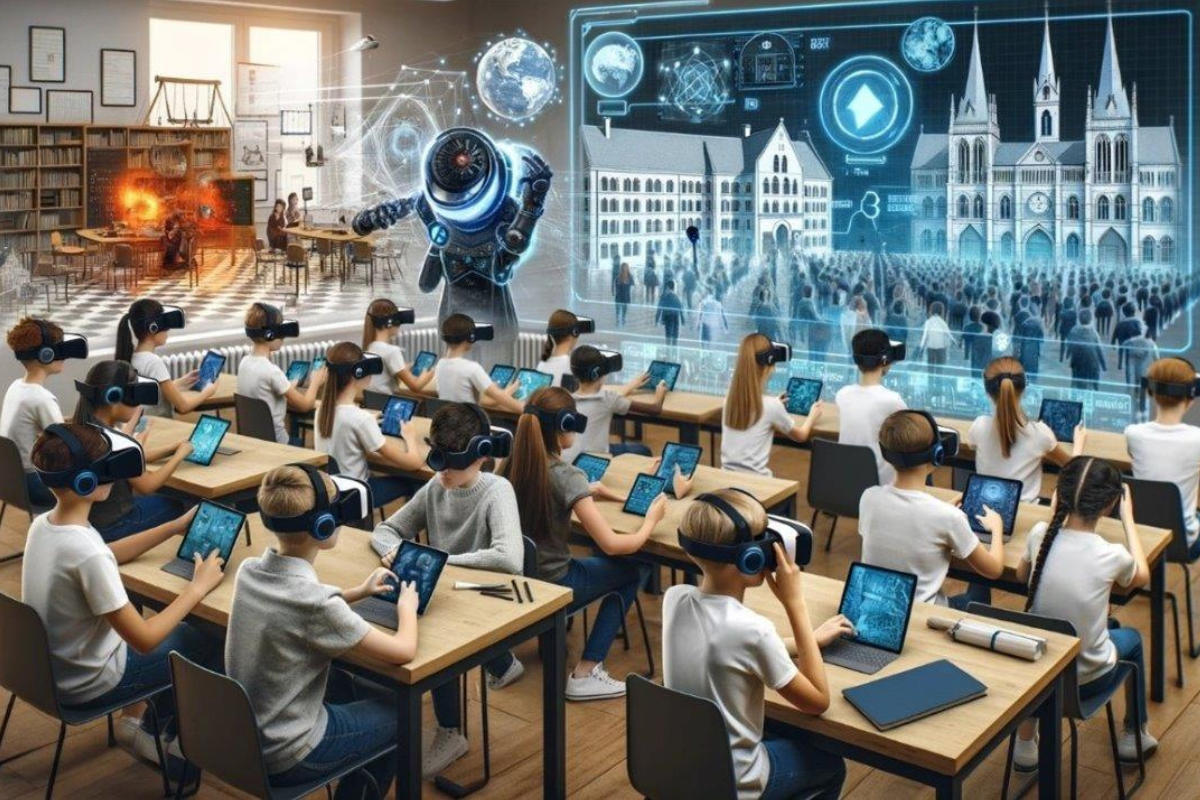Virtual Reality (VR) and Augmented Reality (AR) have rapidly evolved from their nascent stages into powerful educational tools over the past few decades. As an Academic and the Teaching, Learning & Manager at Regent Business School, Bryson Pather has observed how these immersive technologies revolutionise the way we teach and learn. Initially limited to experimental and niche applications, VR and AR have expanded their reach into diverse fields, including education. They offer transformative potential for creating engaging, interactive, and inclusive learning environments. By transporting students into immersive digital realms or overlaying digital enhancements on their real-world surroundings, these technologies make abstract concepts tangible and foster deeper understanding. In this insightful piece, Pather explores how VR and AR are being integrated into educational settings, from virtual labs and historical reconstructions to business simulations and architectural visualisations. By embracing these advancements, educators can offer personalised and dynamic learning experiences, preparing students for the demands of a digital future.
Over the past few decades, VR and AR have evolved rapidly. From early experiments in the 1960s and ’70s to the commercial availability of devices like Oculus Rift and Microsoft HoloLens, these technologies have advanced in accessibility, affordability, and functionality. Today, they are increasingly used in various sectors, including gaming, healthcare, and education, demonstrating their broad potential. But what is Virtual Reality (VR)? VR creates a fully immersive digital environment that users can interact with, often requiring headsets and motion controllers. On the other hand, Augmented Reality (AR) overlays digital information in the real world, enhancing the user’s perception of their environment through devices like smartphones or AR glasses. Both technologies offer unique experiences but differ significantly in their execution and application.
Immersive technologies like VR and AR not only capture students’ attention, making learning more interactive and enjoyable, but they also promote inclusivity in the classroom. By providing a dynamic and stimulating learning environment, these technologies can significantly increase student engagement and motivation. Studies have shown that immersive experiences can improve information retention and understanding. VR and AR allow students to visualise complex concepts, interact with 3D models, and experience scenarios that would be difficult or impossible to recreate in a traditional classroom setting (Brown et al., 2023). These technologies facilitate experiential learning by enabling students to practice skills and apply theoretical knowledge in a safe, controlled environment. For instance, medical students can perform virtual surgeries, while engineering students can test designs in a virtual lab (Gonzalez & Torres, 2021). Advancements like these are a boon for various learning styles, offering visual, auditory, and kinaesthetic learners’ opportunities to engage with content in ways that suit their preferences. Together, VR and AR can provide customisable learning experiences that address individual needs, thereby supporting students with disabilities.















Got a Questions?
Find us on Socials or Contact us and we’ll get back to you as soon as possible.